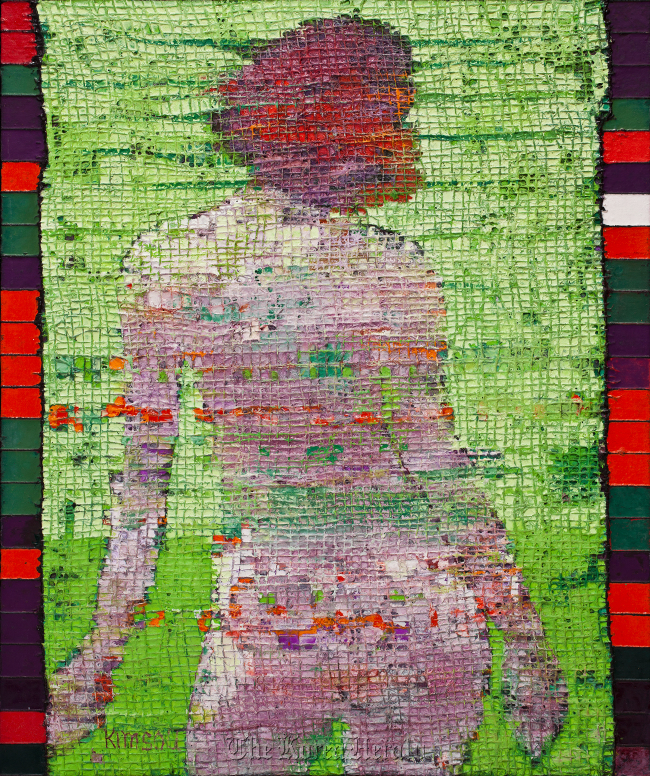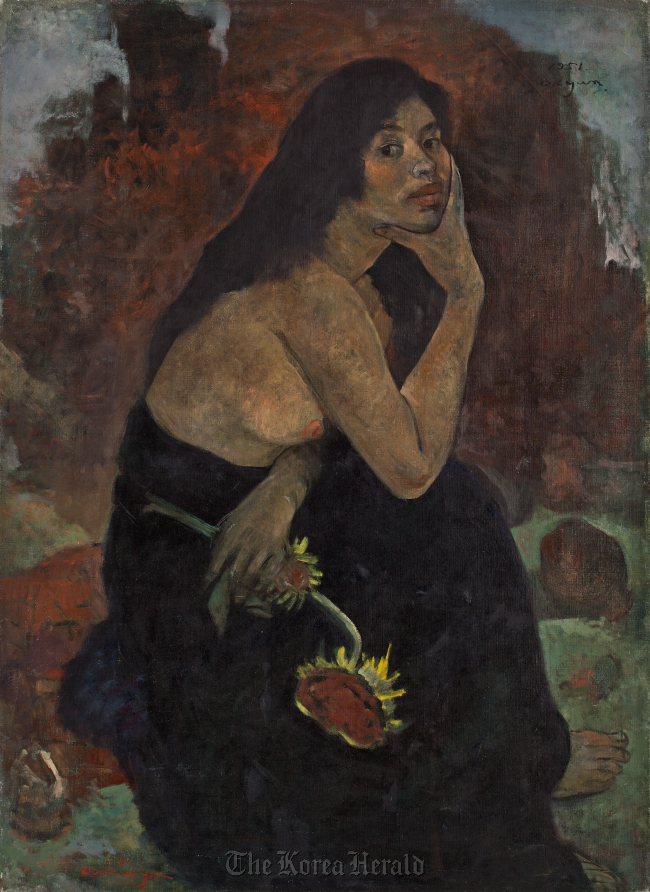Nudes in Korean art
2013-02-03 19:50
 |
| “A Nude” by Kim Heung-su, 1980. (Lotte Gallery) |
The editor’s note read, “The photo of the painting cannot be published as it has naked women.”
The painting by Kim Kwan-ho, featuring two females standing in the nude, was considered the first nude painting of modern Korean art.
While nudity was associated with disgracefulness in the conservative society of Korea, it has been a constant feature in modern and contemporary Korean art.
Lotte Gallery’s exhibition this month shows how nude paintings in Korea have evolved since being introduced as Western art.
“It has been almost 100 the years since the nudes were introduced to Korean art world,” said Seong Yoon-jin, curator of the exhibition.
The exhibition features 50 major nude paintings, drawn from 1930 to 2000, which are then divided into two time periods ―before and after the 1960s.
The year 1960 was an important turning point in the style of nude paintings. There are only a few nude paintings drawn before 1960s. Artists followed the academic style of the Western nude paintings and some tried to create their own style during the turbulent years.
After the 1960s, artists tried to break away from the academic style and experimented with a variety of styles.
It is speculated that there are only 50 nude paintings made before the Korean War, one of them being Lee In-sung’s “A Nude in Green Background.”
Lee In-sung was praised as a genius painter during 1930s and 1940s, when Korea was under the Japanese colonial rule. His nude painting is considered to represent his independent style developed when Japanese influence in art was very strong.
 |
| “Wife” by Kwon Ok-yeon, 1951. ( Lotte Gallery) |
There are some nude paintings drawn during the Korean War such as Kwon Ok-yeon’s “Wife,” and “Female Nude” by Lee Lim.
According to Seong, Kwon drew his wife in the nude on their wedding anniversary in 1951. The materials used in the painting are telltale signs of the artist’s struggles to create the painting during the war.
Kwon borrowed paints from his artist friends and used coal briquette ashes to create darker shades and a piece of broken glass as a palette.
While nude paintings were still regarded as shameful in Korea, the modern paintings feature a different style and meaning from the old erotic “chunhwa” paintings from the Joseon period.
“Chunhwa paintings purposely focused on sexualization of images while nude paintings respect the human form itself,” said Seong.
The paintings made after the 1960s feature different styles using the curves of the female body or simplifying it.
Lee Man-ik’s nude painting from 1995 presents a female body in a geometrical form that seems like an illustration.
Kim Heung-su created a balance between curves of the nude female with geometric forms in his 1980 painting. Kim used the female nude as a major subject in his art practice because he’s drawn to the “beautiful curves of a female body and recreation of the curves.”
The exhibition also features special nude paintings that tell their own special stories such as Han Mook’s one-and-only nude painting and disabled artist Son Sang-ki’s portrayal of himself and his lover.
The exhibition “Korean Modern and Contemporary Nude Paintings” runs until Feb. 20 at Lotte Gallery, at Lotte Department Store in Sogong-dong, Seoul.
For more information, call (02) 726-4456.
By Lee Woo-young (wylee@heraldcorp.com)


